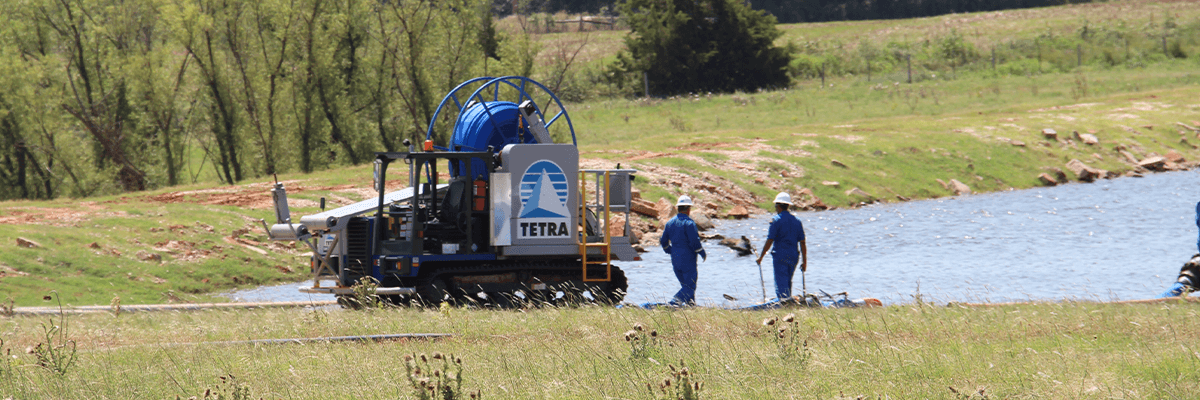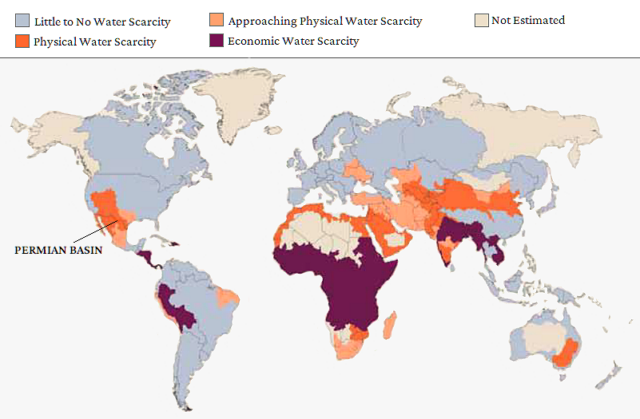A Singular Source for Frac-Water in the Permian Basin
By Armando Saenz | Director of Integrated Services | December 6th, 2021

Today, the Permian is the most prolific petroleum-producing basin in the United States, now providing roughly 40% of the country’s crude oil and 15% of its natural gas1. Once considered in decline, the basin owes its current production boom to horizontal drilling and hydraulic fracturing, and especially to the continued enhancement of these techniques over the past few years. Below are some frequently asked questions from our Permian customers relating to sourcing water.
What is the biggest challenge of sourcing water in the Permian Basin?
In addition to being oil-rich, the basin also happens to lie within the most water scarce region of the Americas. Given that fracturing a well requires millions of gallons of water—upward of 20–30 million gallons in the Permian—sourcing freshwater for fracking is a major challenge for all operators in the region. And though we’ve made tremendous strides in recycling produced water and flowback, a lot of freshwater is still needed up front to initiate jobs as well as to blend with recycled water.

SOURCE: Wikipedia/UN World Water Assessment Programme (WWAP), public domain.
What are the business and operational challenges?
Sourcing freshwater in the Permian is a complex, multifaceted endeavor that entails: [i] identifying and assessing freshwater sources; [ii] obtaining water-well permits from agencies; negotiating surface use agreements (SUAs) from landowners; [iii] securing contiguous rights of way and running the piping used to deliver the water from source to pad site; and [iv] evaluating the content and quality of the water. Adding to the complexity is knowing the regulatory landscape, which varies between Texas and New Mexico and is now quite stringent on federal lands.
How does SwiftWater address the complexity of sourcing freshwater?
SwiftWater, A TETRA Company is a comprehensive one-stop shop for water sourcing in the Permian. Instead of dealing with multiple companies, which is seriously inefficient, time-consuming, and ultimately drives up overall costs, operators can streamline their water sourcing with a singular partner for sourcing, permitting, SUAs, logistics, and invoicing.
Our team of water sourcing professionals has a stellar track record working with landowners, leaseholders, local communities, and the various local, state, and federal agencies, securing the permits, agreements, and right of ways necessary to delivery freshwater to pad sites.
We understand the challenges intrinsic to accessing water from surface and sub-surface sources in the Permian. Foremost in our water provision process is establishing and sustaining respectful and mutually beneficial relationships with the various stakeholders while minimizing environmental impact. We also understand that time is of the essence in your operations, so we work swiftly and tirelessly, leveraging our relationships and years of experience to provide you with the volumes of freshwater you need, where and when you need them.
From where does SwiftWater source its Permian freshwater?
SwiftWater has access to an expansive network of water-wells across a half-million acres of the Delaware Basin and Midland Basin. Our network of strategically located wells also includes all the necessary permits and SUAs. When a customer needs water, we consult our map and identify the best source in terms of proximity, delivery, and the required volumes.
Is the sourced water clean or does it require treatment?
Our sourced water is clean, even potable, and requires no treatment prior to use in frac operations. It’s also ideal for blending with recycled flowback and produced waters.
Does SwiftWater deliver cost efficiency to customers?
Yes, because SwiftWater serves as a one-stop shop, handling all the permits, SUAs, delivery, and invoicing, our simplified logistics delivers value and cost-efficiency in the overall water sourcing process.
Does SwiftWater water sourcing align with ESG concerns?
Absolutely. SwiftWater is dedicated to addressing environmental, social, and governance concerns, which are now foremost among both the public and investors. One way we’re doing this is through improved water delivery infrastructure in the basin, transferring more water via water lines instead of by truck. Fewer trucks on the roads means less noise, less traffic, and fewer emissions, all of which align with the environmental and social concerns of local communities.
In terms of governance, which is about how we conduct business, moving water via water lines enables us to fulfill the ever-rising demand for water while also reducing the costs and risks associated with trucking. Trucks remain necessary where we cannot run water lines, but most of the water is now moved via water lines.
What is the current key challenge with overall water management?
Given the volumes of produced water generated by frac operations, the main challenge is disposing of it in salt-water disposal wells. SWD (or injection) wells are becoming a less attractive option due to their shrinking capacity, environmental impact, and potential seismicity, so we should expect permitting for these wells to become even more stringent in the years ahead.
The alternative to disposing produced water is to recycle it, and while recycling may seem like an issue separate from sourcing, balancing water scarcity with water needs should inspire operators to take a more holistic view of water usage and think of recycling as a component of the overall water sourcing process. Yes, frac operations require a significant amount of freshwater upfront, but as soon as the huge volumes of produced water begin flowing to the surface, a smart recycling program can reinforce and add value to an already sound water-sourcing program.
SwiftWater is in business to address our clients’ frac-water needs. We understand that not only having adequate and timely supplies of high-quality water is critical to successful unconventional projects, but also that water is essentially a commodity now, one that impacts profitability, efficiency, production, and ESG concerns. Given the value of water, especially in the Permian Basin, operators need a water-sourcing partner they can trust.
[1] Texas Railroad Commission, “Permian Basin: Information & Statistics,” at rrc.texas.gov.



